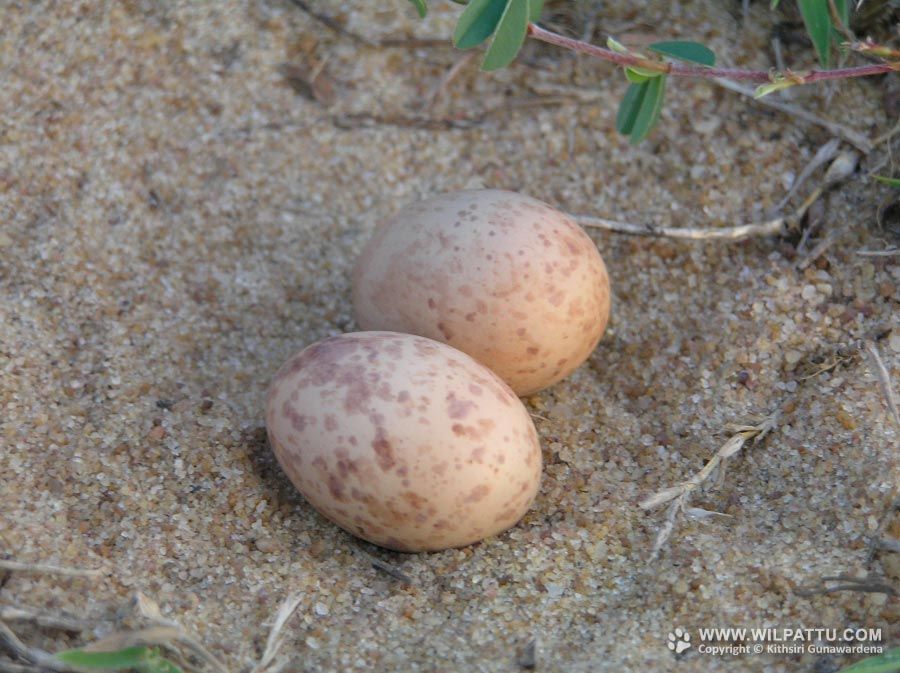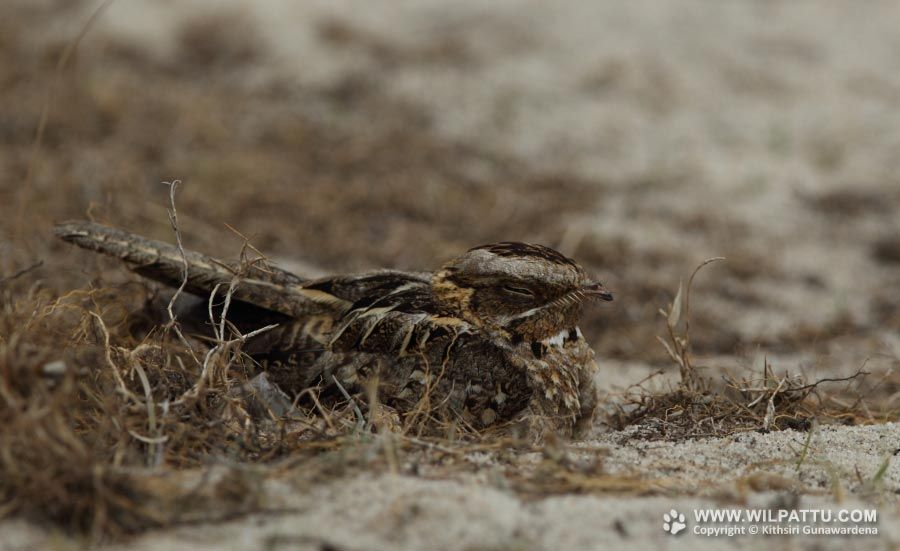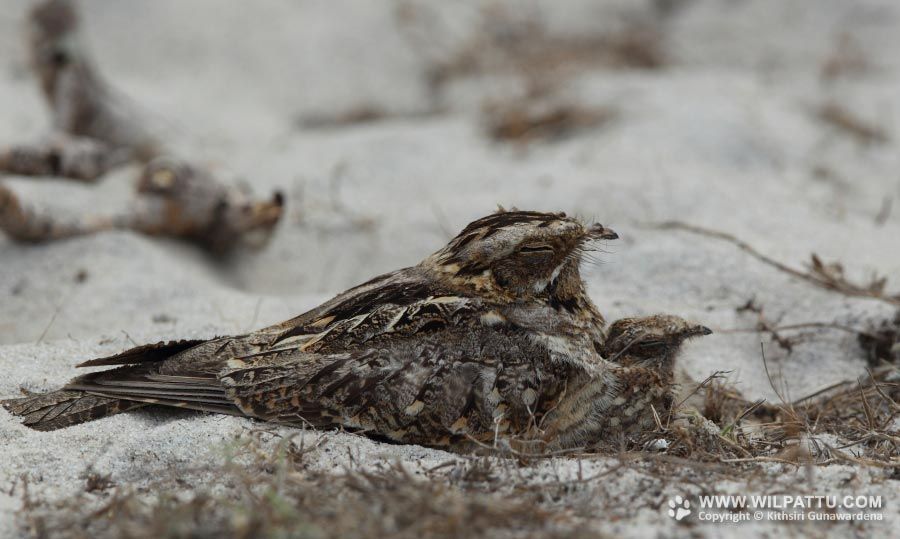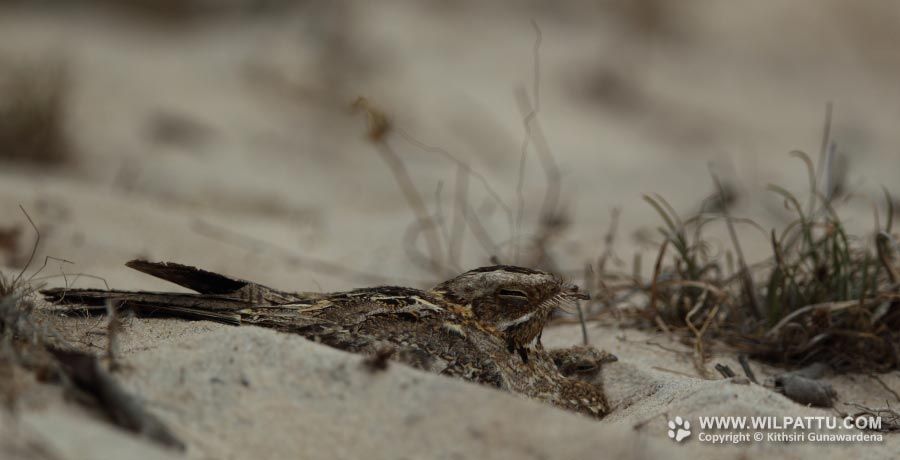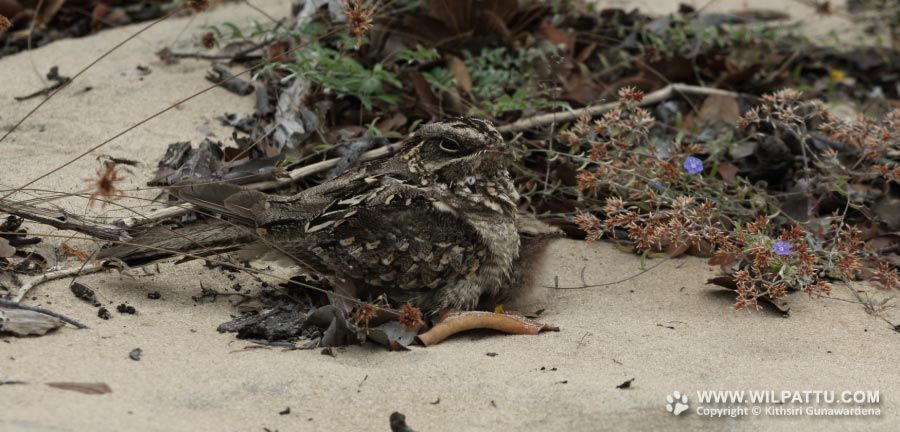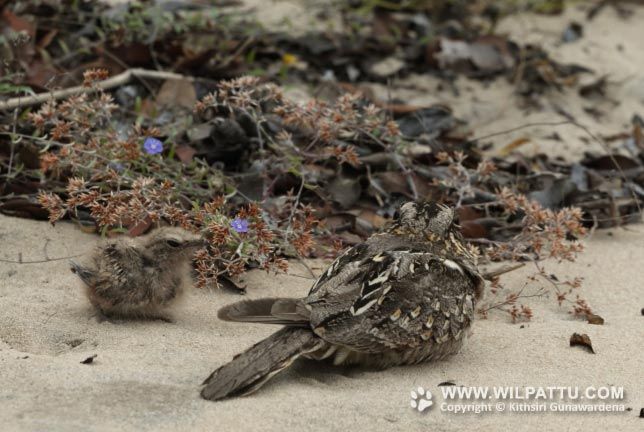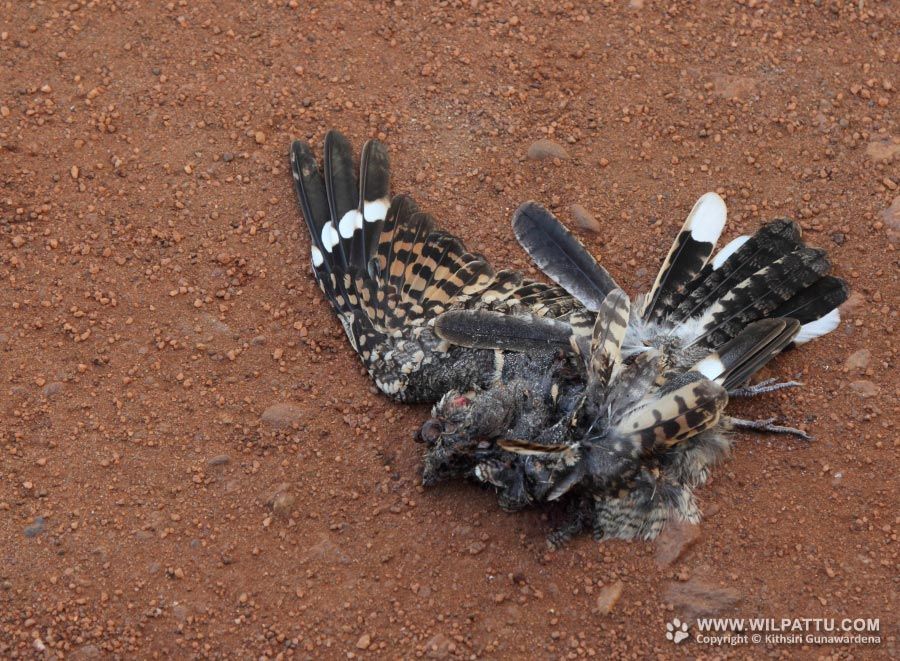
Birds ‹‹ Go Back
This is a resident species that breeds throughout the dry lowlands. Three subspecies have been recognized: C.a. eidosis endemic to Sri Lanka, C.a. asiaticus found in Pakistan, India, Bangladesh, Myanmar, Vietnam, southern Thailand and Indochina and C.a. siamensis found in northern Thailand.
The conservation status of the species under reference is regarded as Least Concerned (National Red List 2012).
The Indian Nightjar is a species protected under the Fauna and Flora Protection Ordinance as amended by Act No. 22 of 2009.
This is the smallest of the three species of nightjars that are found in the country. Even though it is primarily found in the dry zone, it is recorded from the open fields at Katunayake, north of Colombo close to the Airport. It is a familiar sight in the dry zone for motorists driving on roads through jungles or open scrublands at night to spot this species seated, particularly on dirt roads and tarred byroads with eyes shining bright against the headlights of the motor vehicles. It is common in all the dry zone national parks. Its call is similar to a marble or a ping-pong ball being dropped on a hard surface and coming to rest. Usually the birds will begin their call at dusk and again before the break of dawn. I have observed this species nesting at many locations in the dry zone from June to September.
This is a common species in Wilpattu found throughout the park. On the 14th of July 2012 I observed a bird sitting on a single egg at Alam Villu on bare sand. By the 11th of August the bird was at the same locality with its chick. The next day the adult and the chick had moved about 10 feet from where the female was found incubating towards the forest edge. On the 22nd of June 2013 around 6.30p.m. another bird was observed at Panikkar Villu sand patch with a tiny down covered chick. As I watched, the adult flew close to the chick, hopped up to it and fed it. Thereafter, the chick moved under the adult. The next day by 8.44 a.m. the adult and chick had moved a few feet from where they were spotted the previous evening. As I watched, the adult walked further away from where they were seen and the tiny chick ambled behind the adult and crept under its wings.
Even though these birds perch on the ground during the day; sometimes out in the open, it is very difficult to locate them due to their being superbly camouflaged among the dried leaves, twigs, dry grass and such other dried matter on the forest floor.
When driving out of most dry zone national parks after an evening’s game drive, invariably all motorists will observe these birds seated on the road. It is important that you drive at a moderate speed and give these birds enough time to fly away and avoid collisions with your vehicle that will result in certain death to the bird.

